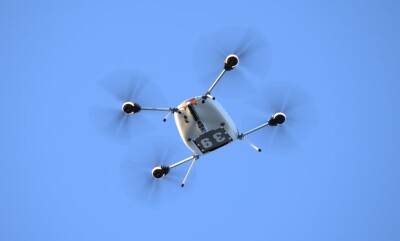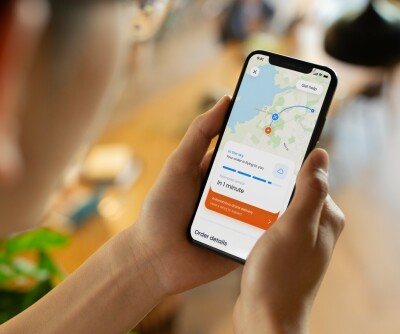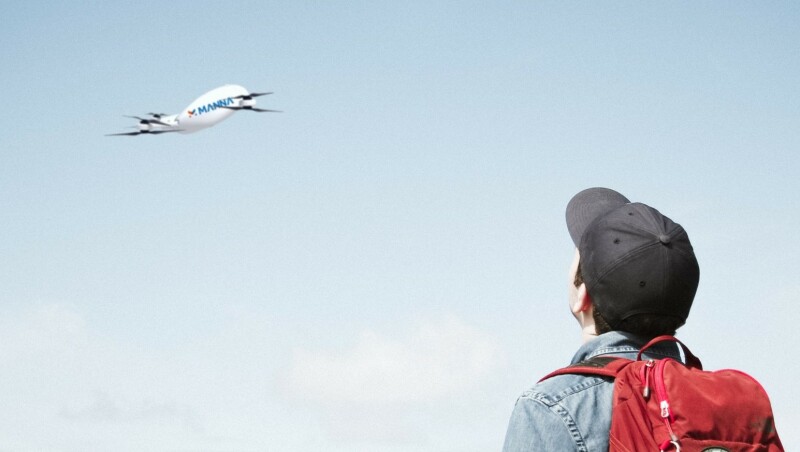After so many years of promises and expectations, it feels good to report on current applications for uncrewed aerial technology and companies that are actually accumulating the necessary experience and business sense to become profitable.
Manna Drone Delivery has managed to create a unique business model that has allowed the company to grow and expand geographically in a way that would make it profitable by Q4 this year.
 We had a fascinating conversation with Bobby Healy, CEO of Manna Drone Delivery, in which he explained the business model, the history, and the exciting road ahead as they plan their North American launch.
We had a fascinating conversation with Bobby Healy, CEO of Manna Drone Delivery, in which he explained the business model, the history, and the exciting road ahead as they plan their North American launch.
“We see ourselves as a logistics company,” said Healy. “Our model is to place the product of any vendor at the suburban home of any consumer in our covered area. In other words, we are product agnostic, and even though most requests are for food, the set-up is designed to support any product.”
Currently the service is concentrated in the Dublin suburb of Balbriggan and the number of deliveries is staggering as can be seen in this video with the animation of 500 deliveries in one weekend.
“There are two modalities in the way we help businesses in the area to supply their customers,” said Healy. “The first is that the business set up a shop in our base and produces the goods right beside the launching pad, this implies just one flight from our roof to the customer and back. The second is that the drone takes off from our base, flies to the merchant’s shop, picks up the goods, flies to the customer and back to base. This allows for certain flexibility in the model.”
After thousands of flights, there are some trends that Healy and his team are using to streamline the process and continue reducing the cost per flight. One definite trend was food preference and Manna used this data to improve their delivery times.
“We discovered that the most ordered foods on our services were Chinese, Indian, hamburger/fries, and pizza, so we offered vendors of these foods the opportunity to set up outlets in our launching pads,  thus accelerating the time between the reception of the order and the effective delivery,” Healy stated. “All these constant improvements have resulted in a very satisfying growth especially in repeat business. In Balbriggan, 40% of the population uses our service 1.6 times a month and we are confident that this number will continue to grow as word of mouth contributes to popularize the service.”
thus accelerating the time between the reception of the order and the effective delivery,” Healy stated. “All these constant improvements have resulted in a very satisfying growth especially in repeat business. In Balbriggan, 40% of the population uses our service 1.6 times a month and we are confident that this number will continue to grow as word of mouth contributes to popularize the service.”
Given the fact that all these delivery flights are by definition autonomous, it is easy to conclude that they are beyond the visual range of the operator and that raises the question of how did Manna manage to get permission to operate BVLOS?
“We operate under an EASA LUC (Light Unmanned Certificate), and with oversight from the IAA we’re currently flying a 2-3km radius, so while not technically ‘beyond line of sight,’ that’s a red herring as we can achieve profitable unit economics with multiple aircraft per dispatcher, and we will do that this year in Ireland—operating profitably at a location level—even flying short distances. The demand is there,” Healy said. “We design and manufacture our drones to the highest standards of safety and reliability and that allowed us to convince the regulator that the service is safe, especially in operations in suburban areas and over people and property. This industry is all about a crawl, walk, run approach to operations, and as we’ve done a great job at crawling, and now walking, it’s nearly time to run. We believe in an open and transparent dialogue with our regulators around the world to help move things forward for everyone.”
When it comes to the operational facts, Healy was very detailed in his explanation of how a generic service, not linked to or attached to a particular vendor is a winning proposition.
“By providing a service that’s agnostic from the vendor we opened the door to companies of every size to have access to this revolutionary way of providing their customers with a great product in record time,” said Healy. “We have gone to extraordinary lengths to make our service as friendly as possible. All a customer needs to do is to download the app and register their address with the exact location where they want their delivery  and then place the order. Our drones use LiDAR technology (Light Detection and Ranging) to determine if the landing site submitted by the customer is adequate for a safe delivery. All our deliveries are accomplished using a winch that safely lowers the package to the designated landing spot.”
and then place the order. Our drones use LiDAR technology (Light Detection and Ranging) to determine if the landing site submitted by the customer is adequate for a safe delivery. All our deliveries are accomplished using a winch that safely lowers the package to the designated landing spot.”
Using their success in Ireland, Manna Drone Delivery is now planning to penetrate the US market by launching operations in the city of Hillwood, TX, but Healy was clear that they are in the early stages of preparations.
“Europe is years ahead of the USA in terms of BVLOS operations, and we are working with our American team in obtaining the necessary waivers to be able to replicate our success in Ireland across the Atlantic,” Healy said, “We are planning for a launch of the service by the end of summer in Texas, pending our PART 107 ops over people (OOP) waivers but are very excited about the USA.”
With a strong business model and a successful funding campaign, Manna Drone Delivery is well positioned to be a key player in the drone delivery business worldwide, which, in our opinion, is here to stay and will grow exponentially as more and more countries adopt regulations that allow for autonomous flights in suburban and rural areas.















Comments